Customer Engagement Examples You Can’t Miss Out in 2024
Do you have a favorite cafe that goes beyond great coffee, providing a cozy ambiance where you feel relaxed? And you keep suggesting people to go there? Well, you’re not just their customer but their engaged customer! Discover more customer engagement examples in our blog.
An engaged customer is one who lives an experience through your brand and stays connected even after buying your products. They are like your loyal brand advocates. This is why brands are focusing on customer engagement strategies now.
You might be wondering how they engage you. It’s not just the coffee taste; it’s the experience:
- Baristas offering smiles and sparking conversations.
- Remembering your favorite drink and having it ready for you.
- Surprising you with freebies.
Is there a difference between a customer and an engaged customer? Let’s explore some examples of customer engagement!
We also have excellent pre-planned customer engagement strategies to help release your creativity! Get ready for a flood of inspiring ideas!
What Is Customer Engagement?
Customer engagement or customer engagement framework is the process of actively involving customers in interactions and experiences with a brand to build lasting relationships. It goes beyond transactions, fostering loyalty and satisfaction. Through effective communication and valuable content, businesses can create meaningful connections and address customer needs. Leverage an AI cloud contact center to enable real-time customer data access, allowing personalized and more engaging interactions.
One powerful strategy to optimize customer engagement is through marketing outsourcing. This approach allows businesses to tap into specialized expertise, ensuring that their communication and content efforts are not only effective but also tailored to their target audience.
Customer engagement boosts brand loyalty, encourages repeat purchases, and amplifies customer advocacy. By optimizing customer engagement strategies, businesses can enhance their online presence, increase customer satisfaction, and ultimately drive growth and success.
Get inspired by these examples and start to implement them now!
Best Customer Engagement Examples
We have collected some seriously impressive examples of customer engagement that will make you wonder, “Why didn’t I think of that?!”
Well, these 9 real-life customer engagement examples of leading brands have cracked the code, and we’re about to spill all the secrets.
- Netflix’s Stranger Things Season 4 Release
- LEGO’s Rebuild the World
- Wendy’s Twitter Roasts
- Spotify’s Value Propositions Program
- HMxME
- BMW’s Story of Joy
- Sephora’s Beauty Insider program
- Nike’s Nike+ app
- Glossier’s user-generated content
1. Netflix’s Stranger Things Season 4 Release
Netflix is not just a favorite pastime activity anymore; it is an addiction now, thanks to its excellent marketing strategies and customer engagement!
Out of all its strategies, Netflix’s customer engagement example about the release of Stranger Things Season 4 is a prime example of captivating customer engagement.
One notable component in this strategy was the introduction of “A Stranger Morning,” a cartoon series created by the minds behind Stranger Things. This animated spin-off served as a warm-up for the upcoming season, further immersing fans in the show’s universe and creating excitement.
This example of customer engagement presents Netflix’s commitment to not only provide good content but also understand and engage their target audience.

2. LEGO’s Rebuild the World
Who says a toy brand’s target audience has to be kids? LEGO shattered that belief and now we all enjoy playing with LEGOs, crafting unique creations. What helped LEGO rebuild this? It was their campaign called, #RebuildTheWorld.
This campaign is an outstanding customer engagement example that effectively taps into people’s emotional connection with LEGO. By promoting creativity, imagination, and play, the campaign resonates with individuals of all ages, inviting them to participate in the LEGO experience.
The example of customer engagement leverages user-generated content and the hashtag #RebuildTheWorld to encourage customers to share their creations, stories, and ideas, fostering community and engagement. This interactive approach transforms customers into brand advocates.
Additionally, the campaign targets existing and potential customer satisfaction, highlighting the universal appeal of LEGO’s products.
The “Rebuild The World” campaign is an exceptional customer engagement example as it focuses on emotional storytelling, user-generated content, and inclusive messaging, allowing LEGO enthusiasts worldwide to co-create and celebrate the power of imagination.
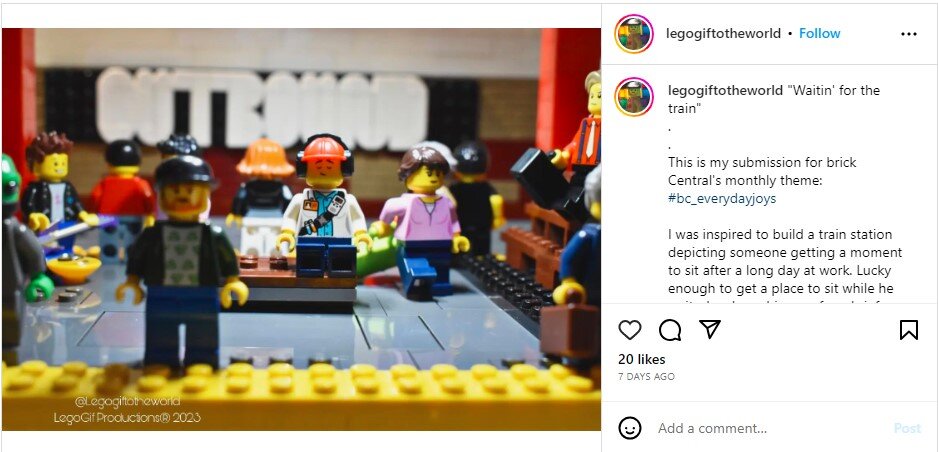
3. Wendy’s Twitter Roasts
Brands have gone crazy thinking of social media campaigns, designing posts, and strategizing their content. Does your customer engagement strategy have to be this complicated? Wendy’s doesn’t think so.
Wendy’s humorous Twitter roasts and comebacks have become legendary examples of content engagement in the world of social media marketing.
Their marketing strategy cleverly revolves around engaging with customers in a playful and lighthearted manner. Their Twitter account is known for its sassy replies and funny banter with followers and competitors which is why it is a good example of customer engagement.
These interactions not only generate buzz and virality but also demonstrate Wendy’s commitment to building unique and memorable relationships with its customers.
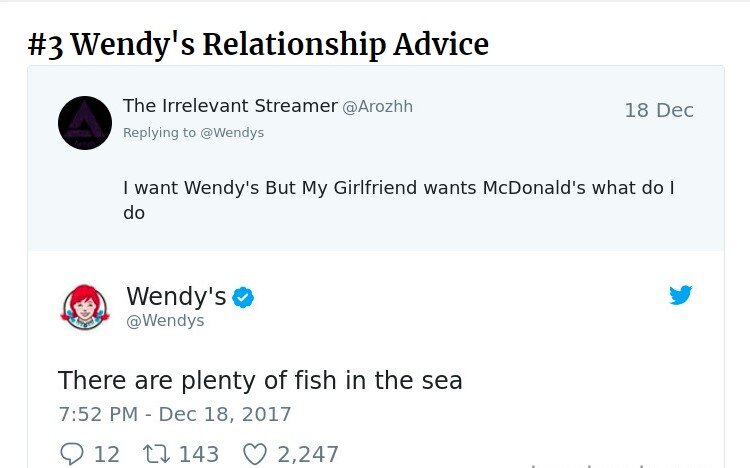
4. Spotify’s Value Propositions Program
Everyone’s stories at the end of the year look something like this,
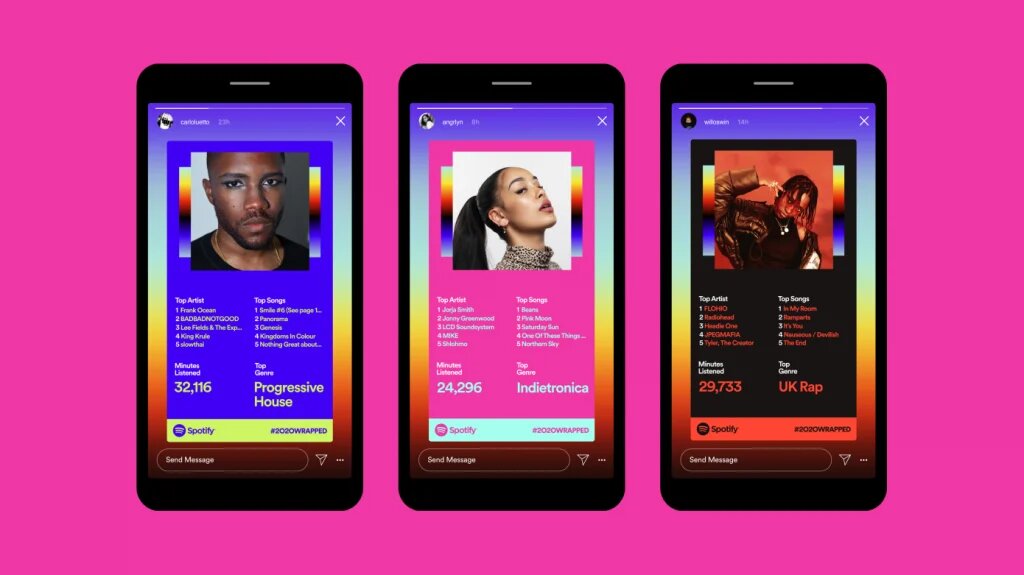
Thanks to Spotify Wrapped, It is like an annual report that Spotify makes for its users that summarizes your year in music, revealing your top artists, total listening time, and more. It’s a delightful way to reflect on your music journey.
Spotify’s focus on personalizing customers’ experiences is a brilliant example of effective customer engagement. They have mastered the art of keeping their users hooked and returning for more.
By leveraging personalized and relevant content based on individual music preferences, Spotify creates a unique digital customer experience for each listener.
Features like Discover Weekly and Daily Mixes provide personalized playlists tailored to users’ tastes, making them feel like they have their own personal DJ.
This personalized approach satisfies users’ musical cravings and fosters a deeper connection with the platform, which makes it an excellent social proof example marketing strategy.
5. HMxME
“I love your skirt. Where did you get it?” I am sure you are used to hearing this if you shop from H&M. This brand is not just about high-quality apparel and great prices; they sell experiences more than their products by keeping in touch with their customers.
H&M’s #HMxME campaign is a prime example of effective customer engagement marketing. The campaign encourages customers acquisition to showcase their personal style and fashion choices using the hashtag #HMxME. By leveraging user-generated content, H&M taps into the influence of social media to amplify its brand message.
The campaign showcases customer photos across various platforms, including the brand’s website, social media channels, and in-store displays. This customer engagement strategy also utilizes the power of social proof, as real people showcase their
H&M outfits inspire and attract potential customers.
Through this customer engagement example, H&M effectively transforms its customers into brand advocates, strengthening the bond between the brand and its audience.
6. BMW’s Story of Joy
When you are on the road and a car drives by that makes your head turn, it has to be BMW! At one point in time, this car was the most asked-for Christmas present even by the kids, do you know why? The answer is simple: they focused on their customer engagement strategy! Want to know how?
BMW’s “Story of Joy” campaign, launched in 2010, focused on customer engagement by capturing and celebrating the emotional connection between BMW owners and their vehicles.
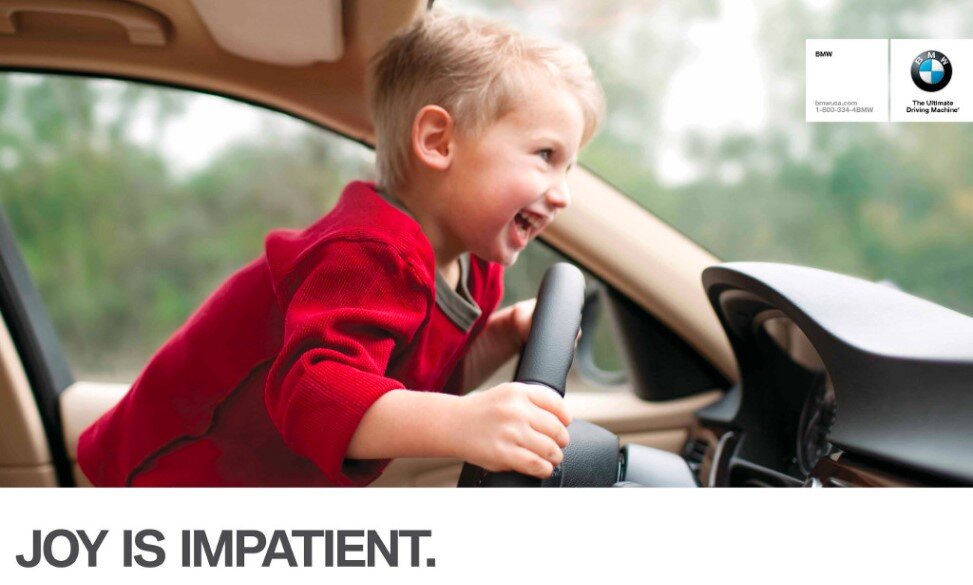
The campaign used storytelling techniques to create compelling narratives resonating with the target audience, establishing an emotional bond.
BMW went beyond traditional advertising by involving customers in storytelling, encouraging them to share their personal stories and experiences through various channels. This approach strengthened the brand-customer relationship, promoted a sense of community, and turned satisfied customers into brand advocates, driving word-of-mouth marketing and customer loyalty. This is why it is an epic example of customer engagement.
7. Sephora’s Beauty Insider program
How often does one buy makeup? A little too often when it’s on Sephora! Let’s see why.
Sephora’s Beauty Insider program showcases a remarkable marketing strategy as it focuses on digital customer experience. It offers customers exclusive benefits and rewards, attracting them to become part of a thriving community.
By providing a tiered system where members can climb from Insider to VIB (Very Important Beauty Insider) and ultimately to Rouge status, Sephora creates a sense of achievement and progression for its customers.
The program is one of the great customer engagement examples as it focused on personalized recommendations, access to limited-edition products, early access to sales, and exclusive events.
The program’s success lies in creating a solid emotional connection with customers, turning them into brand advocates who actively participate in Sephora’s online forums, product reviews, and social media campaigns.
So if you want your customers to keep coming back to you, write down this example of customer engagement strategy by Sephora, it will do the job!
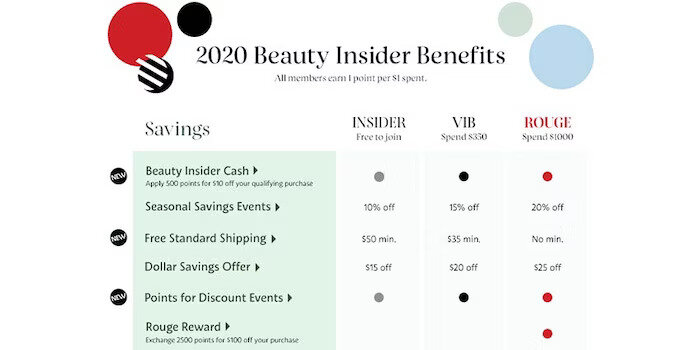
8. Nike’s Nike+ app
In the blink of an eye, Nike has transformed from a sports apparel brand to a sports and fitness resource, with the Nike+ app focusing on customer engagement.
Nike’s marketing strategy for the Nike+ app is next-level for engaging customers.
They’ve shaken things up and gone beyond the usual marketing stuff. They’ve blended technology, fitness tracking, and personalized features into one package. This is what makes them eligible to be a successful customer engagement example.
They’ve created a bridge between their brand and customers. The app allows users to track their workouts, set goals, and receive personalized recommendations.
Plus, you can connect with a crew of people who share your love for Nike. It’s not just a one-time thing, either. Nike wants to be there for you on your fitness journey, providing the tools and support to reach your goals.
This app is a successful example of customer engagement as it shows that Nike is all about building a real connection with their customers, going way beyond just selling products.
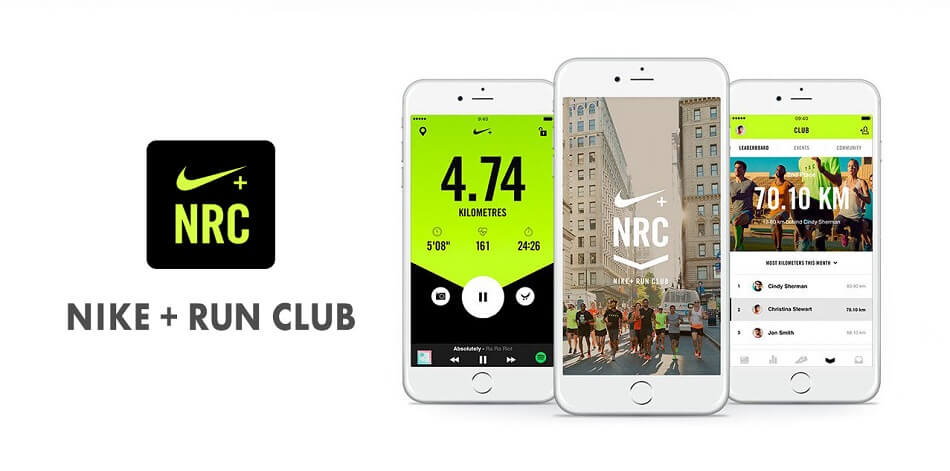
9. Glossier’s user-generated content
Don’t we love it when our work is published somewhere or our achievement is displayed? Well, Glossier knows this too well as its customer engagement strategy relies heavily on user-generated content, meaning they don’t have to create any long-form content.
They just republish the content created by the engaged customers. It is an excellent customer engagement example. Do you want to try it for your brand too? Let us help you!
Glossier has become a master at utilizing user-generated content (UGC) as a central element of its marketing strategy. The brand actively encourages and highlights content created by its dedicated community, resulting in a unique and impactful brand experience.
Through social media platforms, Glossier has cultivated a loyal network of customers who willingly share their authentic experiences with the brand’s products.
By amplifying this UGC across various channels, Glossier effectively transforms its customers into brand ambassadors, driving peer-to-peer recommendations and fostering inclusivity and relatability.
This approach enhances brand visibility, builds trust, and strengthens the bond between Glossier and its customers, making them feel valued and acknowledged.
By recognizing and celebrating its customers’ creativity and individuality, Glossier has successfully created a dynamic, two-way conversation within its marketing efforts.

Tips for Implementing Customer Engagement Strategies
Alright, just like we promised, here’s a little something for you! We’ve gone through all the successful customer engagement examples and picked out the ones that work the best and are common in all of them.
We did this to make it easier for you to understand and use the best customer engagement strategies!
- Personalize interactions and messages based on individual customer preferences and needs.
- Utilize multiple channels, such as social media, follow-up email, chatbots, knowledge base software, and helpdesk, to engage with customers.
- Actively listen to customer feedback and promptly address their concerns.
- Produce active customer communication through regular updates, newsletters, and targeted campaigns.
- To build trust and loyalty, provide consistent, high-quality products or services.
- Practice transparency and authenticity in all interactions to establish credibility.
- Create a customer loyalty program to reward and incentivize repeat business; a coffee shop loyalty card is a good example highlighting the effectiveness of such programs.
- Leverage data and analytics to gain insights into customer behavior and preferences.
- Encourage and facilitate customer reviews and testimonials to showcase positive experiences.
- Foster a customer-centric culture throughout the organization to increase customer satisfaction.
Best Practices for Customer Engagement:
- Maintain a consistent brand voice and tone across all customer touchpoints.
- Continuously monitor and measure the effectiveness of your customer engagement strategies.
- Regularly update and adapt your strategies based on customer feedback and market trends.
- Understand your buyer’s customer service expectations and adopt strategies that support them.
- Train and empower your customer service representatives to deliver exceptional experiences.
- Outsourcing a live chat support system or a robust business phone system for quick resolution of issues.
What to Avoid during Customer Engagement:
- Over-automating customer interactions can lead to impersonal experiences.
- Being too sales-focused and neglecting to build genuine relationships.
- Ignoring customer feedback or failing to address concerns promptly.
- Treating customer engagement as a one-time effort rather than an ongoing process.
- Neglecting the importance of data privacy and security in customer interactions.
By implementing these strategies, following best practices, and avoiding common pitfalls, you can effectively engage with your customers, foster loyalty, and drive business growth.
Conclusion
To sum it all up, we’ve explored some outstanding customer engagement examples that will leave you in awe.
We’ve seen how top-notch companies like Netflix, Wendy’s, Spotify, H&M, BMW, Sephora, Nike, Glossier, and LEGO have successfully delighted their customers and built strong connections with them.
From creative marketing campaigns to personalized experiences and user-generated content, these companies have set the bar high for customer engagement.
We also discussed some practical customer engagement strategy examples, not to forget, some best practices followed by top brands for customer engagement, and some common mistakes to avoid during the same.
By following these guidelines, you can engage your customers effectively, foster loyalty, and drive your business to new heights.
Frequently Asked Questions
Customer engagement refers to how a company establishes a connection with its customers to build brand loyalty and increase awareness.
Customer engagement brings –
1. Brand Advocacy
2. Customer satisfaction & retention
3. Business growth
4. Valuable feedback
The most prominent types of customer engagement are:
1. User-generated content (e.g., reviews, testimonials, social media mentions)
2. Social Media Engagement
3. Email Marketing
4. Customer Surveys and Feedback
5. Live Chat Support
The stages of customer engagement are:
1. Discovery: The initial phase where customers become aware of your brand, product, or service.
2. Onboarding: The process of guiding and familiarizing customers with your offerings after they show interest.
3. Engagement: Building a strong relationship with customers by providing valuable content, interactions, and experiences.
4. Purchase and Retention: The stage where customers make a purchase and are encouraged to remain loyal through excellent service and ongoing engagement.
5. Advocacy: Satisfied customers who become brand advocates, promoting your business through positive word-of-mouth and referrals.
Brands should focus on customer engagement to build strong relationships, foster social proof, and create a positive brand experience, ultimately driving business growth.
